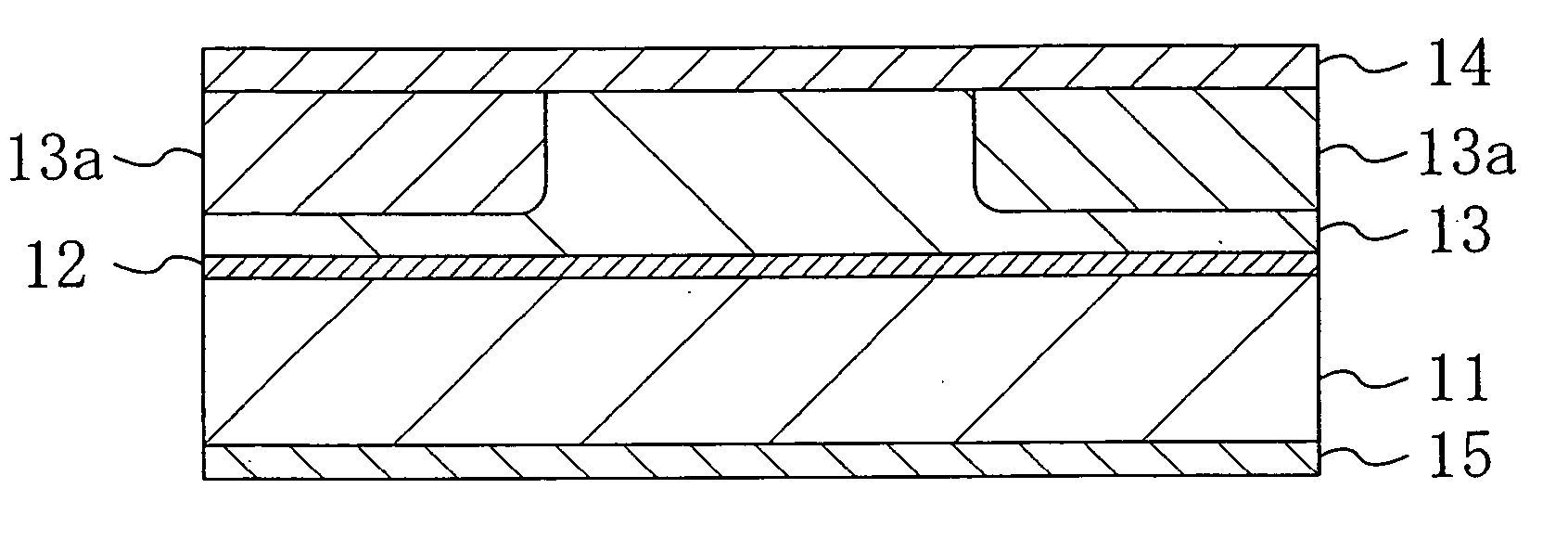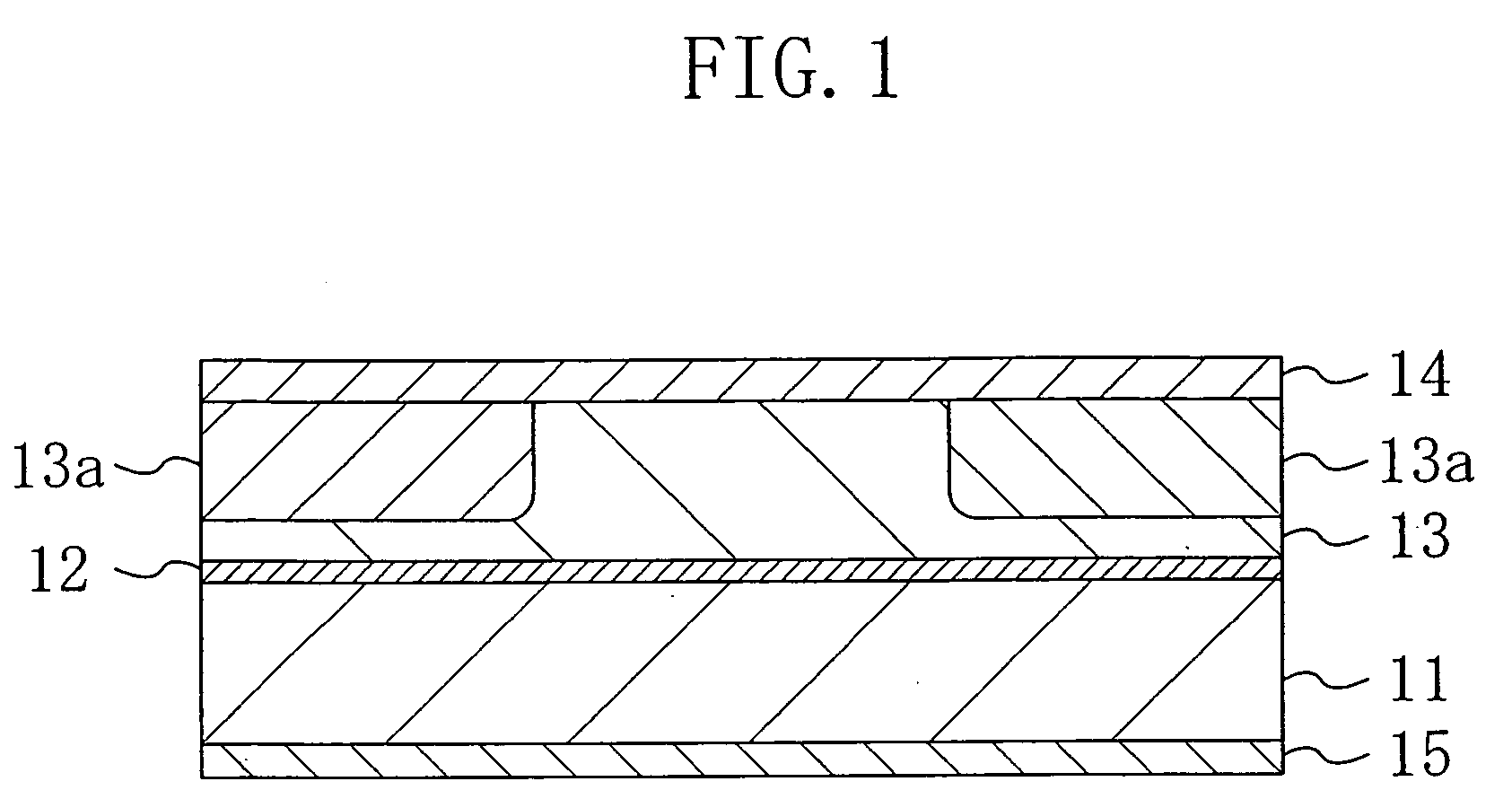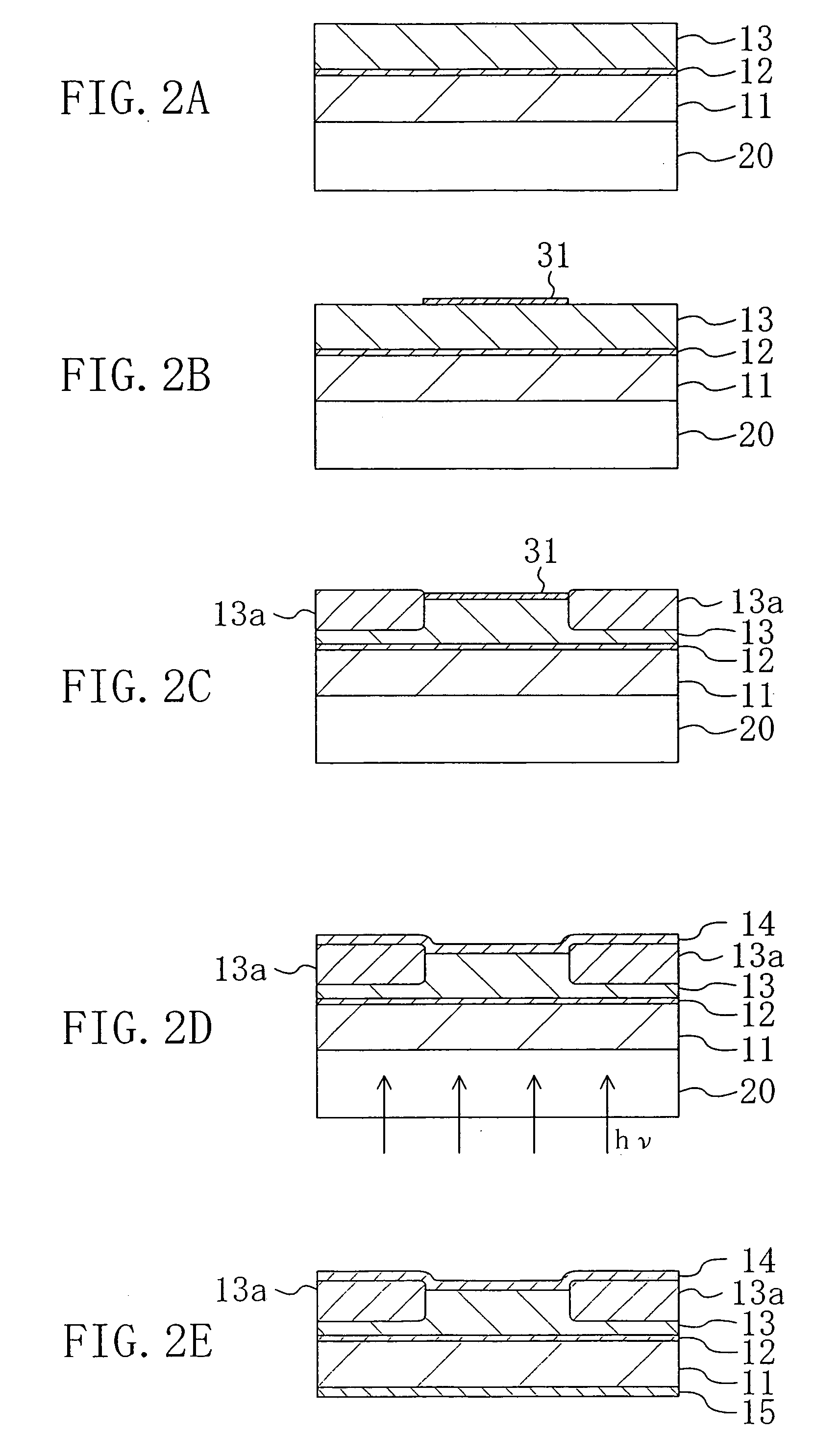Semiconductor device and method for manufacturing the same
a semiconductor and semiconductor technology, applied in the direction of semiconductor lasers, semiconductor laser structural details, lasers, etc., can solve the problems of increasing the device cost, the inability to grow gallium nitride semiconductors by crystal growth techniques, and the difficulty of crystal growth of gallium nitride semiconductors, so as to improve the heat radiating property and reduce the series resistance value
- Summary
- Abstract
- Description
- Claims
- Application Information
AI Technical Summary
Benefits of technology
Problems solved by technology
Method used
Image
Examples
first embodiment
Second Variation of First Embodiment
[0137] A second variation of the first embodiment of the present invention will now be described with reference to the drawings.
[0138]FIG. 5 is a cross-sectional view illustrating a semiconductor device according to the second variation of the first embodiment of the present invention. In FIG. 5, those components that are already shown in FIG. 1 are denoted by the same reference numerals, and will not be further described below.
[0139] As illustrated in FIG. 5, oxidized regions 13b of the semiconductor device of the second variation are formed so as to include the light emitting layer 12 and an upper portion of the n-type first semiconductor layer 11. Thus, the externally injected current can be constricted more reliably, thereby further reducing the leakage current in the light emitting layer 12.
[0140] With the first manufacturing method, the oxidized regions 13b can be formed by growing the structure up to the second semiconductor layer 13, an...
second embodiment
[0144] The second embodiment of the present invention will now be described with reference to the drawings.
[0145]FIG. 6 is a cross-sectional view illustrating, as a semiconductor device according to the second embodiment of the present invention, a semiconductor light emitting device that can be applied to a light emitting diode device or a semiconductor laser device. In FIG. 6, those components that are already shown in FIG. 1 are denoted by the same reference numerals, and will not be further described below.
[0146] In the semiconductor device of the second embodiment, a substrate 21 made of p-type silicon carbide (SIC) oriented along the (0001) plane, for example, is provided on one surface of the p-type second semiconductor layer 13 that is away from the light emitting layer 12.
[0147] Moreover, a p-side electrode 17 as the first ohmic electrode made of an alloy of aluminum (Al) and silicon (Si), e.g., an Al-Si alloy (Al: 89%), is formed on one surface of the substrate 21 that ...
third embodiment
[0165] The third embodiment of the present invention will now be described with reference to the drawings.
[0166]FIG. 8 is a cross-sectional view illustrating, as a semiconductor device according to the third embodiment of the present invention, a semiconductor light emitting device that can be applied to a light emitting diode device or a semiconductor laser device. In FIG. 8, those components that are already shown in FIG. 1 are denoted by the same reference numerals, and will not be further described below.
[0167] The semiconductor device of the third embodiment is characterized in that the exposed surfaces of the oxidized regions 13a, which form the current constriction section, are covered by an insulating film 18 made of silicon oxide (SiO2). Moreover, the p-side electrode 14 is selectively formed on a region of the second semiconductor layer 13 between the oxidized regions 13a.
[0168] Thus, as in the first embodiment, the semiconductor device of the third embodiment does not ...
PUM
 Login to View More
Login to View More Abstract
Description
Claims
Application Information
 Login to View More
Login to View More - R&D
- Intellectual Property
- Life Sciences
- Materials
- Tech Scout
- Unparalleled Data Quality
- Higher Quality Content
- 60% Fewer Hallucinations
Browse by: Latest US Patents, China's latest patents, Technical Efficacy Thesaurus, Application Domain, Technology Topic, Popular Technical Reports.
© 2025 PatSnap. All rights reserved.Legal|Privacy policy|Modern Slavery Act Transparency Statement|Sitemap|About US| Contact US: help@patsnap.com



